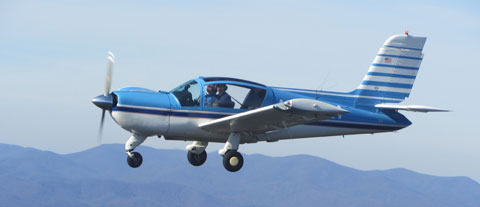When they lower the boom, we may get the word from a general aviation pilot who directs research that is blazing new trails and solving old riddles in aerodynamics.
Peter G. Coen heads up NASA research projects that are moving toward the development of a supersonic bizjet, to be followed by designing a small airliner that might fly by 2025 with a “sonic signature” low enough to permit overland flight, with public acceptance.
The research—evidently including the solution to an aerodynamic paradox that has plagued supersonic aircraft design for decades—is being advanced by modern-day computational capabilities that freed researchers from dependence on previous models of how to produce “low boom” supersonic aircraft, he said in a phone interview.
What may be harder to quantify is how the public will respond to the notion of overland supersonic flight once the case for its reduced environmental effects and potential economic benefits is presented.
Coen, NASA’s Supersonic Fundamental Aeronautics project manager, thinks that attitudes may have changed about that, along with the times.
“Supersonic flight generates a lot of interest and excitement,” he said from NASA’s Langley Research Center.
Supersonic flight development for civilian applications produced practical results after Chuck Yeager first broke the sound barrier in a Bell X-1 in 1947. But most of the noise subsequently heard during its emergence was about the double-boomed noise created by the shock wave that is generated as an object moves through the air at speeds faster than the speed of sound, approximately 761 mph at sea level in standard conditions. One result is that no supersonic civilian transport aircraft are now in service.
By the early 1960s, mathematical solutions already suggested ways to design aircraft that produced sonic booms shaped to reduce their “signature” as experienced by populations on the ground. But it was not until following decades that researchers began to acquire the computational tools “to design reasonable aircraft that incorporated those features,” Coen said.
An aircraft’s weight is a “primary driver” of the amplitude of the sonic booms it would generate, so the size of an aircraft capable of producing an acceptable signature “becomes a real challenge” for design, Coen said. For that reason research now focuses on developing a supersonic business jet, with a small airliner envisioned as a second-generation design.
“As technology improves you can go from a bizjet to a small airliner, to large, but not much larger than the Concorde with weight,” he said.
New computational tools and today’s advanced knowledge of the atmosphere’s effect on sonic shock wave behavior can produce precise experiments. Researchers capitalize by shaping and studying multiple booms of identical character over a given location, he said.
“Shaping technology is what takes a lightweight airframe from a low boom level to a really low boom level,” he said.
Solving the paradox
Armed with a modern capability to explore acoustics and aerodynamic design together, researchers can focus on “achieving low loudness and high efficiency.” Coen calls that a breakthrough; for a long time the evidence suggested that gains on one front were unattainable without setbacks for the other.
NASA is also working to refine its knowledge of air flows under “realistic” supersonic conditions, he said. Research including tests recently announced by Aerion Corp. of Reno, Nev., will probe performance of the company’s patented laminar-flow technology in tests using a NASA F-15B aircraft.
“We have partnered with Aerion to achieve a mutual goal of improving our understanding of boundary layer transition at realistic supersonic flight conditions,” Coen explained in an email message about the tests. “Delaying this transition and thereby achieving laminar flow at cruise is an important aspect of Aerion's product, and will add considerably to the efficiency of the larger aircraft that NASA envisions for the future.”
As for public opinion, Coen agreed that it remains part science, part politics—making it harder to predict whether the public can be persuaded that overland supersonic flight is both economically and environmentally feasible.
“Sometimes it takes a long time,” he said.
With much at stake, the public’s good will isn’t being taken for granted. Programs such as NASA’s WSPR Project (it stands for the Waveform and Sonic boom Perception and Response Project) could help scientists begin to build the case for an eventual lifting of supersonic flight restrictions.
What metrics would apply to an acceptable brand of supersonic civil aviation?
NASA is not in the regulatory business, Coen said. But as it goes about its research, the agency does pursue the question of a noise standard with the FAA and the International Civil Aviation Organization (ICAO).
“We’re trying not to shoot in the dark,” he said.
Rallye GA

When Coen feels the need to slow down, he still finds solace in flight—if perhaps a variety dialed back from the velocities represented on the drawing boards back at the office.
At those times, his main mount for missions of mirth also is an out-of-the-mainstream aircraft: a low-wing Rallye 235E powered by a Lycoming O-540 engine, and “the most comfortable four-seat general aviation airplane I’ve ever flown in.”
Coen, who describes himself as a big guy, became sold on the design when disembarking after a long flight in a friend’s Rallye from a backcountry strip in Idaho to Oshkosh, Wis., in 2002. He said he felt as good as when he climbed aboard. He acquired his own very subsonic Rallye 235E in 2008, and flies it regularly.
Ergonomic comforts aside, Coen lavished his Rallye with fond but slightly backhanded aerodynamic praise.
“It’s a monument to the triumph of thrust over drag,” he said.



